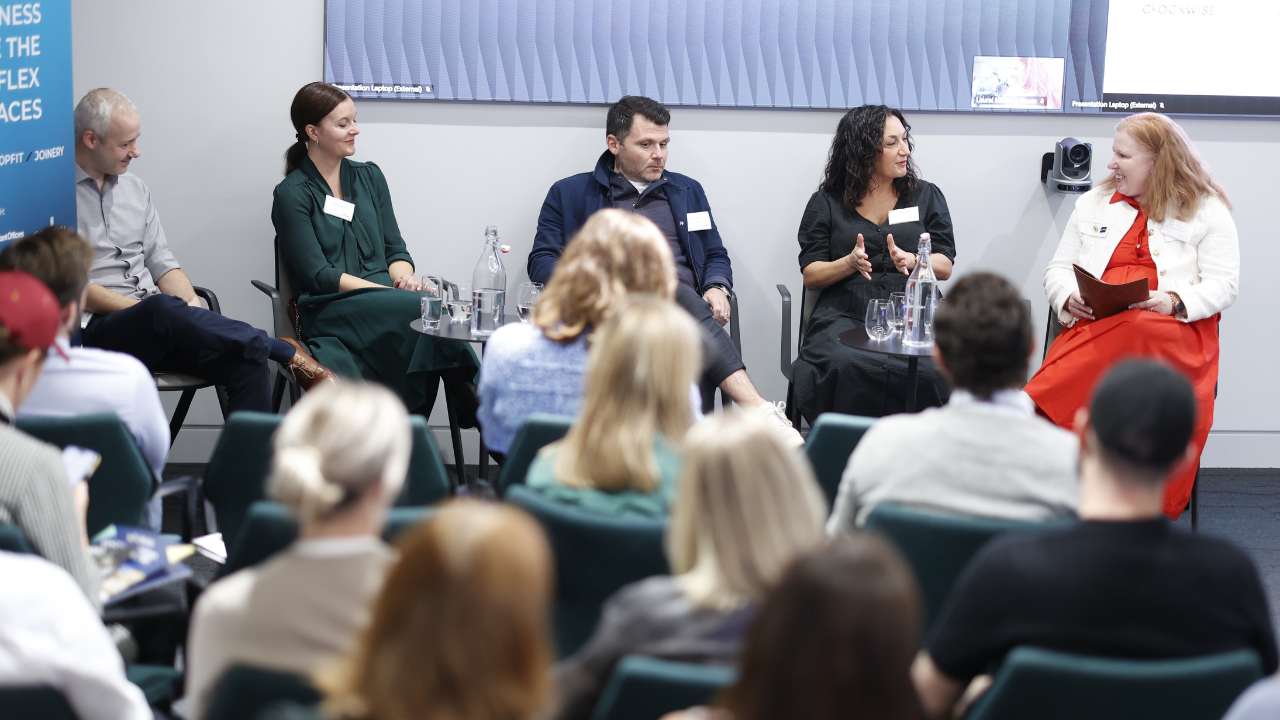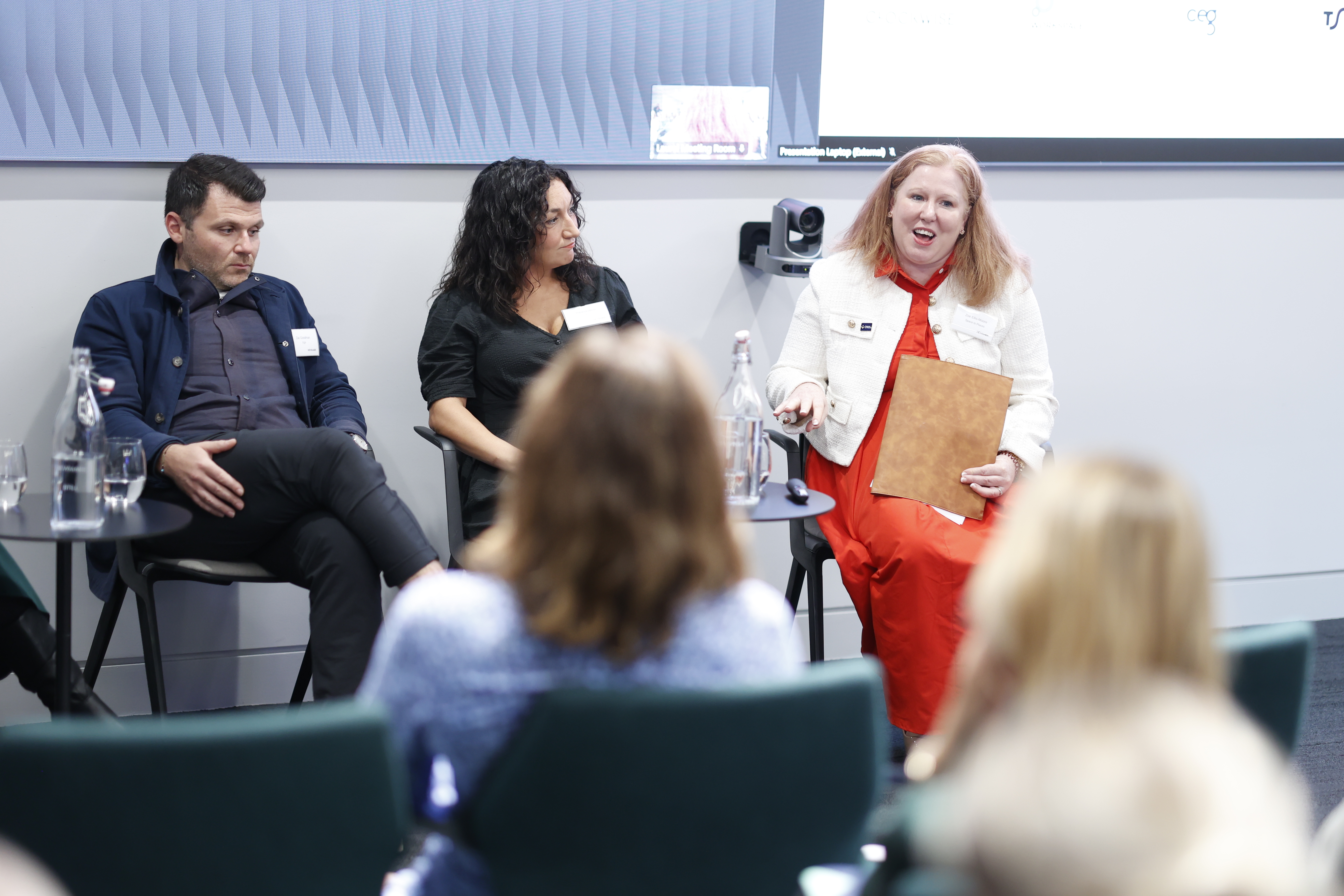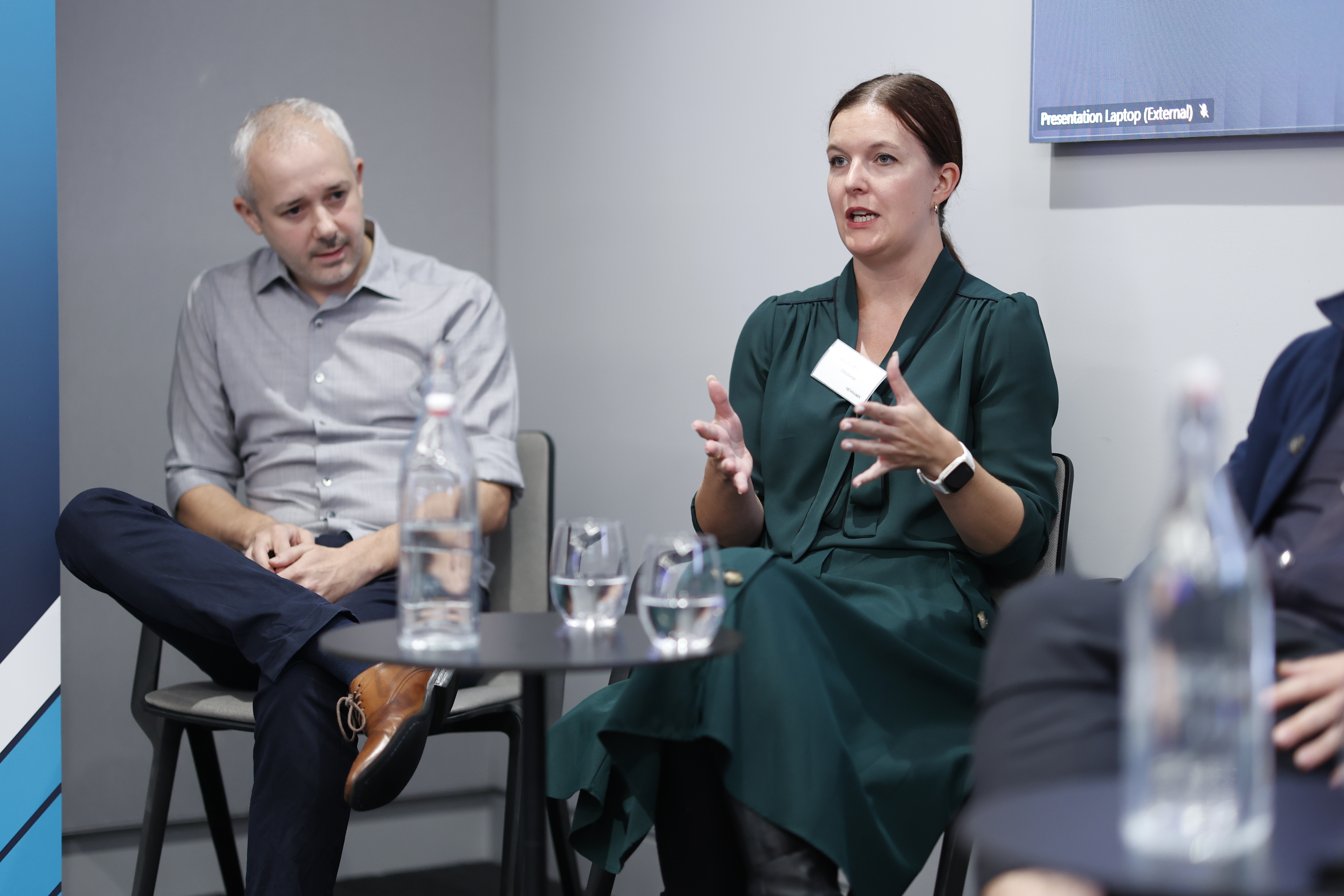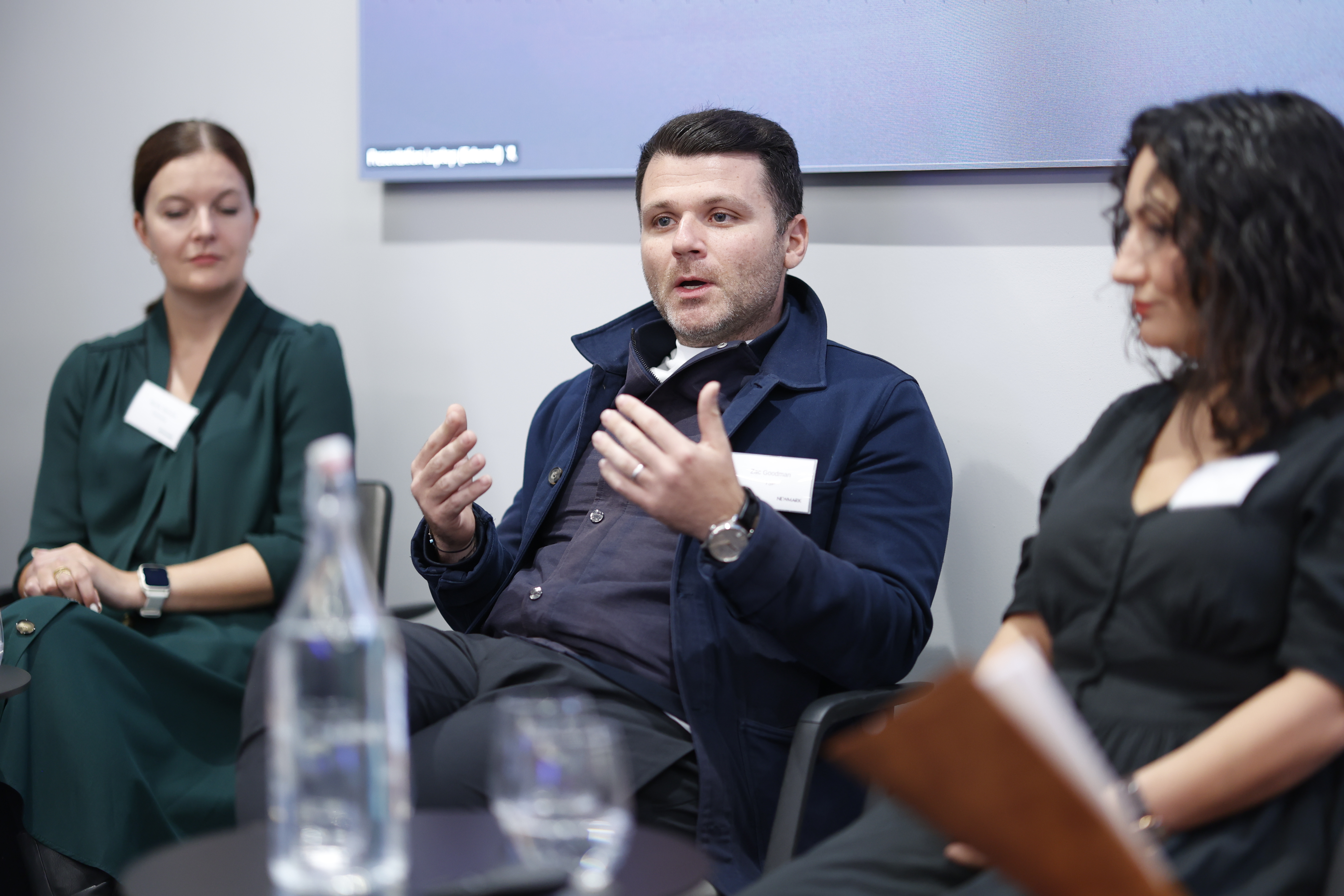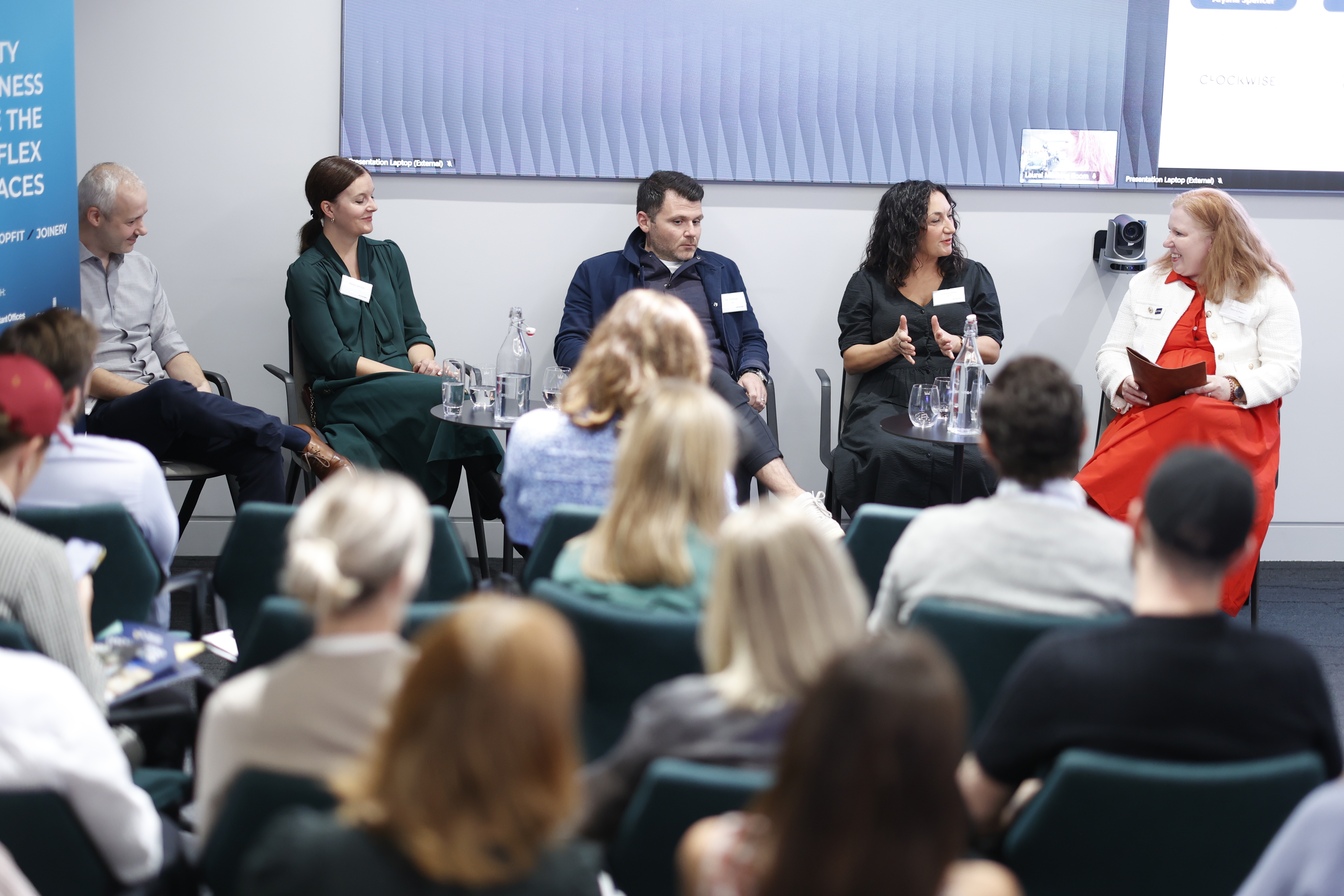The workplace revolution isn’t slowing down; it’s accelerating. At our recent Voice of the Customer research launch breakfast, industry leaders gathered to dissect the fundamental shifts transforming how we think about office space, customer experience, and what truly drives value in today’s market.
The panel brought together four voices representing different perspectives across the flexible workspace ecosystem: Alysha Spencer from Clockwise, Greg Absalom from Workspace Group, Theresa White from CEG, Zac Goodman from TSP, moderated by me. Together, they painted a picture of an industry in profound transformation.
From Hive Mind to Individual Identity
Zac Goodman opened with perhaps the most striking observation of the morning: “Before COVID, being an office worker, being in the knowledge economy was akin to being a factory worker, being a miner in some way. We were worker bees, and we all assembled, we all congregated together in the hive.”
This metaphor resonated throughout the discussion. The pandemic didn’t just change where people work. It fundamentally altered their relationship with work itself. As Goodman explained, there was “this huge awakening of the sense of self. Who am I? Where am I in life? What is my status? Who am I working with? Why? People are becoming more mission-led.”
The implications are profound. Theresa White from CEG highlighted how this shift toward individual identity has changed their approach: “We have inevitably ended up catering for what we’re referring to as’ innovators’… creating something that will attract young talent for recruitment and retention.”
Experience as the New Currency
Alysha Spencer from Clockwise emphasised how this individualisation demands flexibility at every level: “Understanding how we can appeal to multiple types of personas and ways of working… providing spaces and opportunities that can suit different approaches, that give the meeting spaces, the collaboration spaces, that people really come into the building to work.”
However, experience extends beyond simply having the right amenities. Greg Absalom from Workspace Group stressed the importance of understanding the ‘why’ behind customer requests: “When people are taking space, what sort of behaviours are they looking to draw out of their staff and their team… when you start hearing into that, you find really different user groups.”
The Attraction vs. Retention Paradox
One of the panel’s most insightful distinctions came from Zac Goodman’s analysis of attraction versus retention strategies. Using the memorable analogy of 3D TVs. Impressive for the first viewing, but never used again. He highlighted how “attraction can be a bit counterintuitive.”
Instead, retention success comes from optionality. TSP’s fastest-growing segment is what they call “room service” customers who want control over their service bundle. “People having control over what they want allows them to make their own trade-offs. And people like making their own trade-offs when they do things.”
Theresa White reinforced this with CEG’s hands-on approach: “We do have a very personal approach… creating those personal relationships and having multiple conversations.” She emphasised the importance of understanding utilisation patterns: “We’ve learned to tweak that and change those spaces and actually what will be useful.”
Technology: The Promise and the Reality
The technology discussion revealed a fascinating tension between expectation and execution. Zac Goodman shared TSP’s experience of ultimately abandoning their building app: “We had one across our portfolio. We actually binned it… the main driver for people using the app was because we had access control linked to it.”
The lesson? Technology must feel “imperceptible to customers” and integrate seamlessly into their existing digital lives. As Goodman noted, hotels successfully transformed concierge services by moving them to WhatsApp, fitting natively into customer behaviour rather than forcing new habits.
Greg Absalom highlighted the real potential of technology in empowering frontline teams with better data integration: “We’re starting to join up all these data sources into something really valuable for your frontline teams… suddenly you’ve changed that relationship.”
The New Decision-Making Reality
The panel revealed how decision-making processes have become increasingly complex and democratic. Theresa White noted the trend of sending employees for initial site visits: “First rounds will be those employees that use the space… send out our employees, have a look, can you narrow it down for us?”
Greg Absalom provided data supporting this shift, noting that the percentage of businesses choosing office locations based on proximity to the decision-maker’s home dropped from 25% to 10% since the pandemic. Reflecting a more inclusive, employee-focused approach.
Looking Forward: Opportunities and Challenges
When asked about emerging opportunities, each panellist highlighted different aspects of the evolving landscape:
Alysha Spencer focused on the “continual bar raising of expectations in the workplace” and the need to blend technology with experience as a facilitator rather than an end in itself.
Theresa White emphasised optionality: “Being able to take a customer and treat them as an individual and tailor their service level and what we provide to them has been really helpful for us.”
Greg Absalom emphasised the importance of intentionality: “Being really clear about why we’re doing what we’re doing, who we’re doing it for.”
Zac Goodman painted the biggest picture, noting that while the room contained the top 7% of UK office space (80-90 million square feet), there remains “another billion square feet on the table” requiring faster, cheaper, more adaptable solutions.
The Path Forward
The panel’s insights converge on a clear message: the future belongs to those who understand that customers are no longer uniform worker bees but complex individuals with distinct needs, preferences, and identities. Success requires moving beyond one-size-fits-all solutions toward personalised, flexible offerings that put optionality and authentic experience at the centre.
As Zoe Ellis-Moore concluded the discussion: “Since COVID the purpose of the office has changed. Before the worker bee analogy, in some ways, you sort of needed an office but now the transition is you’ve got to want an office, you’ve got to want to be in the office, you’ve got a reason and work out your purpose for going into the office.”
The Voice of the Customer 2025 report, available at spacestoplaces.co.uk/customer, provides a detailed analysis of customer segments, amenity preferences, and strategic frameworks for capitalising on these insights. For an industry at an inflection point, it offers something invaluable: a map forward based on what customers actually want, rather than what we think they should want.

